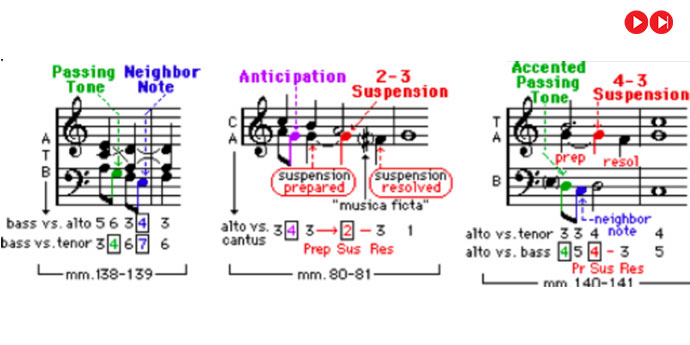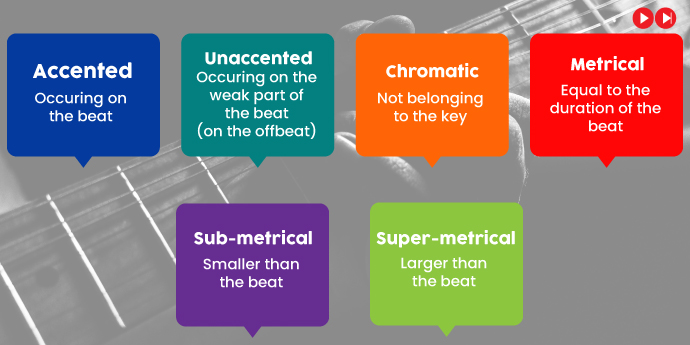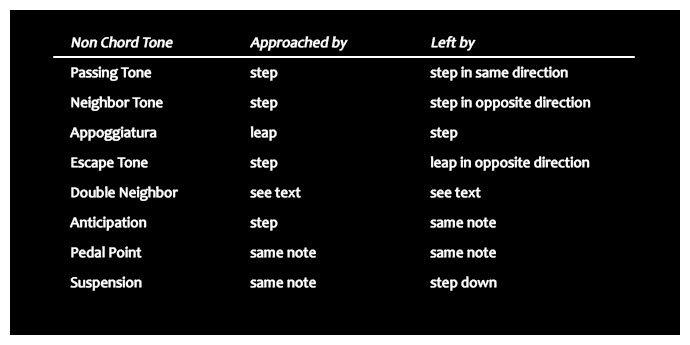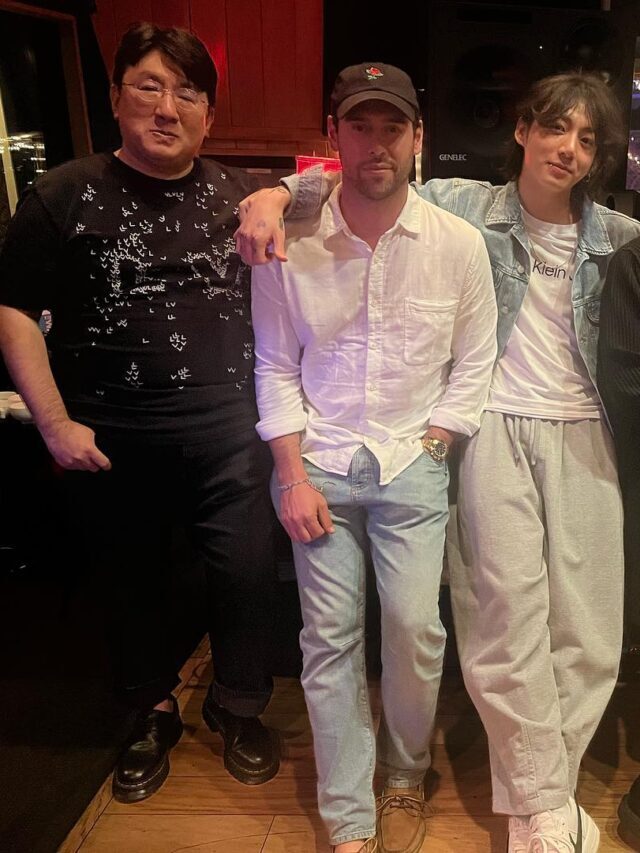What is a chord tone
Chord tones, guide tones, passing tones and so many more tones. Wondering what are non-chord tones? What’s their sense? Are they really helpful in understanding music in detail?

Although the names can start to blend together and get confusing, chord tones, guide tones, and passing tones are a big part of music theory. And having a understanding of these musical elements can help you improve your overall musicianship. Similarly, understanding the non chord tones under music theory is also very important. Adding Non-Chord Tones to a Chord Progression is a way to how to analyze non chord tones. There are many music theories available on internet on non-chord tones.
In this article, we’ll simplify all the confusions related to non chord tones:
Meaning:
Chords are the building elements of music, and they follow well-defined “laws”—but music would be boring if notes didn’t occasionally defy the rules. In reality, melodic lines rarely stay inside the harmony’s confines. Non-chord tones are used in this situation.
Non-chord tones are notes that are not part of the harmony at any particular time, as the name suggests. They can be used to enhance or smooth out melodic lines. Non-chord tones generate dissonance, or harmonic tension, which is an important component of intriguing music.
Non-chord tones are frequently preceded and followed by notes from the harmony (i.e., chord tones). Overuse of non-chord tones can confound the ear’s perception of overall harmony, much as too much spice in a dish might obscure the tastes of the other components.
Let’s learn how to use non-chord tones in a progression.
Best Ways To Use Non-Chord Tones In A Progression
Non-chord tones (or “embellishments”) can be added to the melody or inner voice element of a chord progression in a variety of ways:
1. Repeated note: add above or lower neighbor
Non-Chord Tones (also called “non-harmonic tones” or “embellishing tones”)
- In each case, only ONE note is the actual dissonance, and that dissonant note is “approached” (by the note before) and “resolved” (by the note after) in a certain way.
- Most dissonances happen on a weak beat, and usually are approached/resolved by step.
- The interval that involves the dissonance is measured by its distance from the bass note.
Non chord tones chart –

2. Step down:
- Delay the note’s resolution to add a suspension (Holding a note into the following chord before resolving down a step to a chord tone creates a suspension).
- Step in the opposite direction of the original stepwise movement to add an escape tone, then leap.
- Add a second neighbor (When the note in the melodic line remains the same from one chord to the next, and adjacent tone serves as an embellishment).
- A chromatic passing tone should be added.
- Incorporate a sense of expectancy.
3. Step Up:
- Delay the note’s resolution to add to the delay.
- Add a second neighbour.
- A chromatic passing tone should be added.
- Incorporate a sense of expectancy.
- By leaping one step beyond the note of resolution, placing the appoggiatura on the beat, and relocating the note of resolution to occur after the beat, you may add an appoggiatura (An upward jump creates an appoggiatura, which is then resolved by a step-down. Appoggiaturas occur on the beat every time).
4. 3rd Leap:
- With a passing tone, fill in the third.
- By leaping one step beyond the note of resolution, placing the appoggiatura on the beat, and relocating the note of resolution to occur after the beat, you may add an appoggiatura.

5. 4th Leap:
If you’re taking a 4th or bigger leap, don’t overdo it. Consonant intervals (3rds, 5ths, 6ths, or 8ves) are formed when non-chord tones are added to distinct voices on the same beat. If consonant intervals cannot be achieved, the voices are rhythmically staggered in various types of non-chord tones.

So, make sure that you are using non-chord tones very precisely. We hope this article on how to use non-chord tones helped you in knowing their importance.









